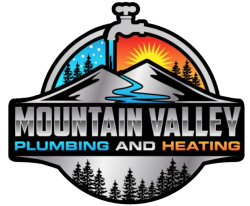It surprises some homeowners to learn that their favorite plumber cannot repair the water leak in their second-floor shower. But that is because not all leaks in showers are coming from a water line or fixture. There can also be issues with the shower stall that are the root of the leak that has ruined your floor, ceiling, and all of the structure of your home in between.
When you notice the first indications of water damage to your first-floor ceiling, it is essential that you begin the search for that water leak quickly. If left unrepaired, even a tiny leak can damage the structural integrity of your home, promote the growth of mold and mildew, and attract bugs and rodents into your home. But first, it is vital that you know what to watch for when you think there could be a water leak at or near your second-floor bathroom.
Signs Of A Water Leak
Many indications should make you start looking for a water leak in your second-floor bathroom. The first thing that you might notice is the odd sound of dripping water, but very soon, you will be able to see many visual indications of the problem, including:
- Moist areas on the ceiling
- Bulging drywall
- Yellow or light brown staining
- Water running down the walls or dripping from the ceiling
When you notice any of these signs of a water leak, it is time to take a very close look at your tub or shower upstairs.
The Five Potential Causes Of Water Damage Under Your Shower
- Leaking Water Line- This can be hard to determine because all the pipes are inside the walls. However, if the water line is always leaking, you could be able to hear the dripping water when your house is very quiet. You can also turn off all the water in your home and then look at the water meter. If the dial is moving at all, you can be pretty sure that your bathroom leak is in the supply water line.
- A Worn Out Faucet- If your faucet is difficult to turn off and on or it drips a lot, there is a good chance that the other parts of the faucet are worn as well, and it is leaking inside your wall. This is a problem that you should have a licensed plumber explore very soon to prevent water damage and mold growth in your home.
- A Clogged Drain- Sadly, the leak in your ceiling could be dirty water. Clogged drains often begin to leak or overflow into the drain pan and leak into your ceiling. This is another job best left to a licensed plumber to properly correct.
- Damaged Tiles- If your shower has tile on the walls, the issue could be cracks in the tile or around them that allow water to enter the walls. Carefully examine the walls of the shower for tile damage that could be corrected with grout or another type of sealant.
- A Leak Around The Tub And Tile Grout Line- This is more common than most homeowners could imagine. A lot of water blasts the seal between your tub and the base of the wall tile. Look carefully for any missing or damaged grout or signs of mold and mildew. Cleaning and replacing the grout could solve your water leak issues.
If you discover that the tile and grout are in good condition, it is time to call (406) 823-3680 for help from Mountain Valley Plumbing & Heating. Our licensed plumber will arrive promptly and locate any leaks that waste water and create costly water damage to your home.

